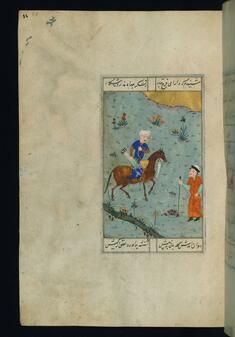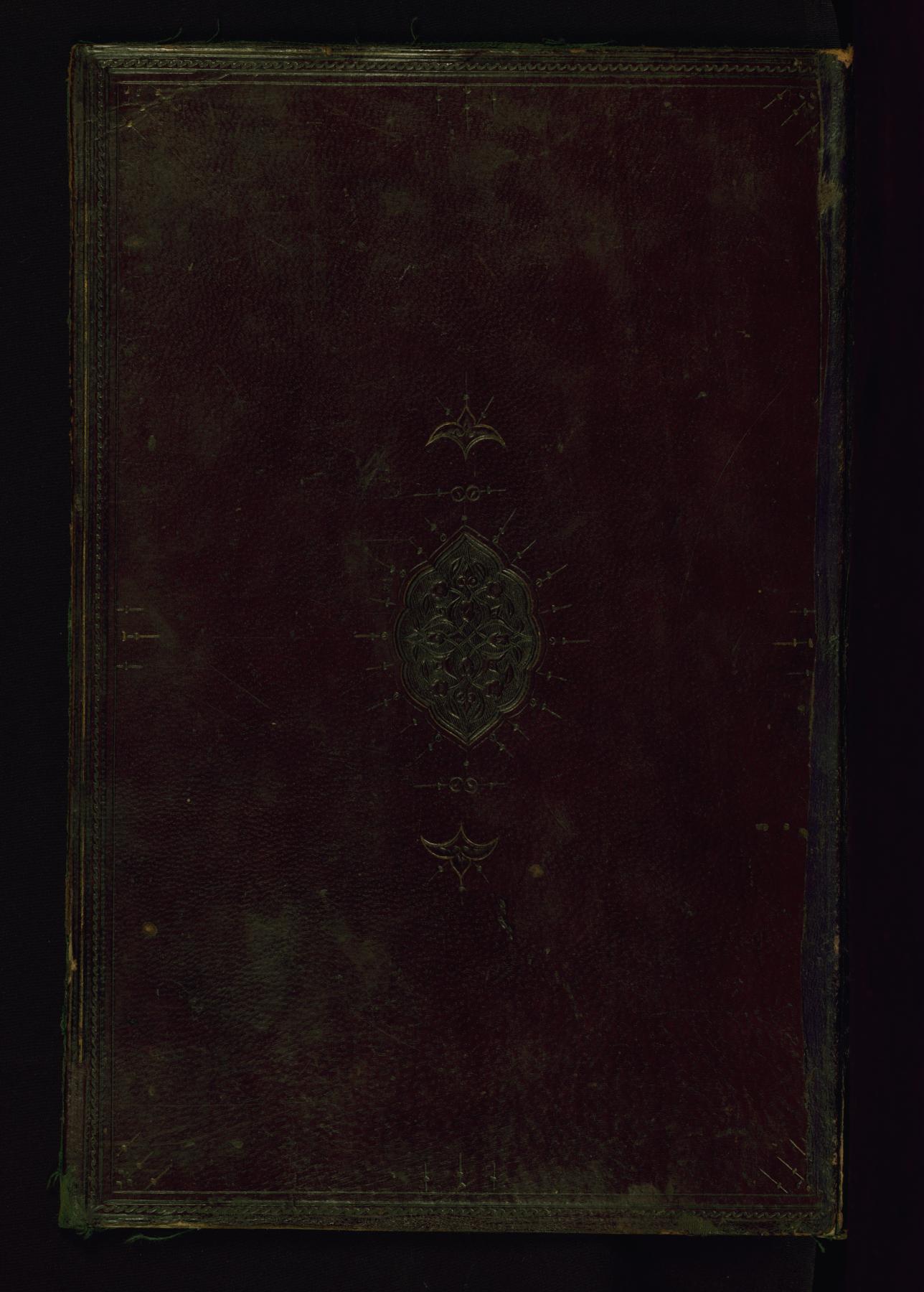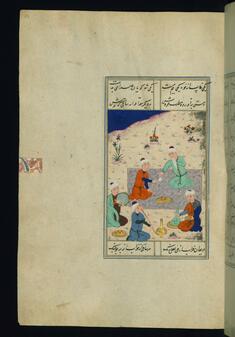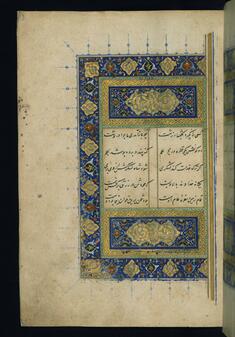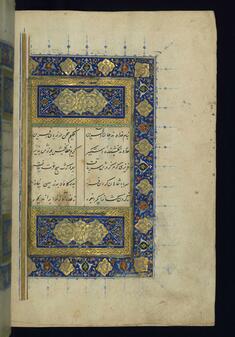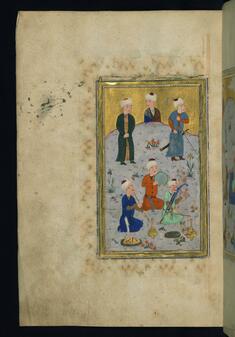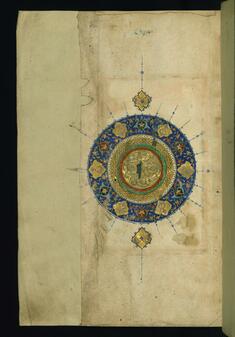The Orchard (Bustan)
(Islamic World , Manuscripts and Rare Books, Islamic Manuscripts)
Walters manuscript W.620 is an illuminated and illustrated Safavid copy of the Bustan (The garden or The orchard), composed by Sa'di (died 691 AH/AD 1292). It was written in black Nasta'liq script in the 9th century AH/AD 16th in Iran. The codex opens with a frontispiece with the title Kitab-i bustan inscribed in an illuminated medallion (fol. 1a), followed by a double-page illustration of a banquet scene in a landscape (fols. 1b-2a). Additionally, there are 5 paintings illustrating the text (fols. 25a, 55b, 58a, 93b, and 119b). The brown leather, blind-stamped binding decorated with a central oval and pendants is not contemporary with the manuscript.
Provenance
Provenance (from the French provenir, 'to come from/forth') is the chronology of the ownership, custody, or location of a historical object. Learn more about provenance at the Walters.
Henry Walters, Baltimore [date and mode of acquisition unknown]; Walters Art Museum, 1931, by bequest.
Exhibitions
| 2012 | Paradise Imagined: Images of the Garden in the Islamic and Christian World. The Walters Art Museum, Baltimore. |
Geographies
Iran (Place of Origin)
Measurements
Folio H: 10 1/16 x W: 6 11/16 in. (25.5 x 17.0 cm)
Credit Line
Acquired by Henry Walters
Location in Museum
Not on view
Accession Number
In libraries, galleries, museums, and archives, an accession number is a unique identifier assigned to each object in the collection.
In libraries, galleries, museums, and archives, an accession number is a unique identifier assigned to each object in the collection.
W.620
Do you have additional information?
Related Objects

Sa'di and Another Man Visiting Shatir Isfahani
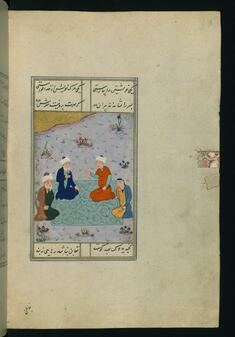
A Man Advised by Village Elders to Divorce His Wife Due to Their Constant Quarreling

An Old Man Who Pulled Out a Thorn From the Foot of An Orphan, Meeting His Friend
